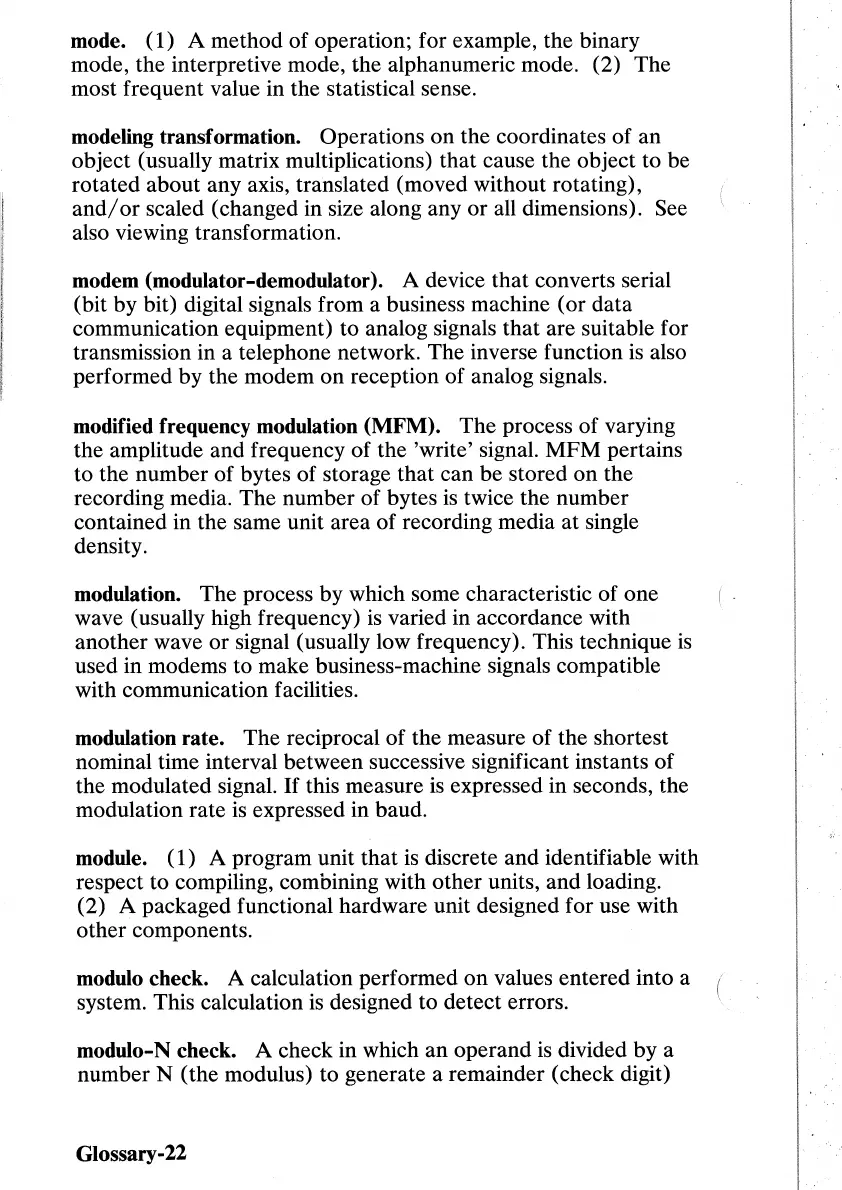mode.
(1)
A
method
of
operation; for example,
the
binary
mode,
the
interpretive mode,
the
alphanumeric mode. (2)
The
most
frequent
value in
the
statistical sense.
modeling transformation.
Operations
on
the
coordinates
of
an
object
(usually matrix multiplications)
that
cause
the
object
to
be
rotated
about
any
axis, translated (moved
without
rotating),
and/
or
scaled
(changed
in size along
any
or
all dimensions). See
also viewing transformation.
modem (modulator-demodulator). A device
that
converts serial
(bit
by
bit) digital signals from a business machine
(or
data
communication equipment)
to
analog signals
that
are suitable for
transmission in a telephone network.
The
inverse function is also
performed
by
the
modem
on
reception
of
analog signals.
modified frequency modulation
(MFM).
The
process
of
varying
the
amplitude
and
frequency
of
the
'write' signal.
MFM
pertains
to
the
number
of
bytes
of
storage
that
can
be
stored
on
the
recording media.
The
number
of
bytes
is twice
the
number
contained
in
the
same unit
area
of
recording media
at
single
density.
modulation.
The
process
by
which some characteristic
of
one
wave (usually high frequency) is varied in accordance with
another
wave
or
signal (usually low frequency). This technique is
used
in
modems
to
make
business-machine signals compatible
with communication facilities.
modulation rate.
The
reciprocal
of
the
measure
of
the
shortest
nominal time interval
between
successive significant instants
of
the
modulated
signal.
If
this measure is expressed in seconds,
the
modulation
rate
is expressed
in
baud.
module. (1) A
program
unit
that
is discrete
and
identifiable with
respect
to
compiling, combining with
other
units,
and
loading.
(2)
A
packaged
functional
hardware
unit designed for use with
other
components.
modulo check. A calculation
performed
on
values
entered
into
a
system. This calculation is designed
to
detect
errors.
modulo-N check. A check in which
an
operand
is divided
by
a
number
N
(the
modulus)
to
generate
a
remainder
(check digit)
Glossary-22
